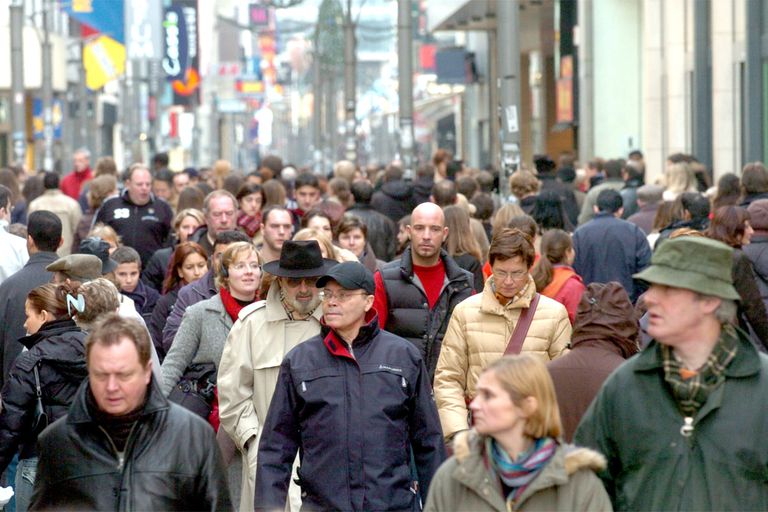Since the beginning of this century, 1,400,000 people moved out of Brussels. This is not the manifestation of a frightening exodus. It is a facet of the extreme and challenging fluidity of the Brussels population.
Philosopher Philippe Van Parijs reflects on current events and debates in Brussels, Belgium and Europe
In 2021, a record 45,000 people left the Brussels-Capital Region in order to settle in Flanders or Wallonia. This is more than in any other year since the creation of the region in 1989. Is this a sign of a dramatic demographic decline?
Not at all. Even in 2021, despite covid and the generalization of teleworking, the population of Brussels grew further. True, the 24,000 people who moved to Brussels from the rest of Belgium did not compensate for those who did the reverse. But the 31,000 who left Brussels for another country were more than compensated for by the 48,000 who moved in from abroad, while the death of 9,000 Brusselers was more than offset by the 16,000 births. Overall net gain: another 3,000 people.
Brussels is not at risk of emptying. If anything, it is overcrowded. Since 2000, while the population grew by 9% In Wallonia and 12% in Flanders, it grew by 28% in Brussels. It is therefore no anomaly that, year after year, thousands of families should move to more or less remote suburbs, in search of greener, quieter and more “Belgian” neighbourhoods and above all cheaper housing.
No anomaly does not mean no challenge. The Brussels Capital Region now has just over 1,200,000 inhabitants. How many people have moved in since 2000? 1,500,000. Yes: one and a half million, over one million among them straight from abroad. In the same period, 1,400,000 have left Brussels, most of them to elsewhere in Belgium. The large surplus of births over deaths in Brussels’ comparatively young population of foreign origin accounts for the rest of the population growth.
These figures help explain the extreme diversity of the Brussels population. The 2015 World Migration report ranked Brussels as the second most cosmopolitan city in the world after Dubai. This is somewhat exaggerated. The figure used in the report relates to the municipality of Brussels, which is only one of the nineteen administrative units of the Brussels Capital Region. Among residents of the latter, more appropriate for international comparisons, the percentage born abroad was not 62% in 2015, but “only” 43%.
Consequently, Brussels cannot fairly claim second position in this world ranking of urban diversity, but it is certain to remain very close to the top. As another illustration: the percentage of residents of the Brussels Capital Region whose parents were both Belgian citizens at birth fell from over 36% to less than 26% between 2010 and 2020. In all likelihood, there are now, for example, more Brusselers with Moroccan roots than with Flemish or Walloon roots. In this sense, Brussels is no longer Belgium, and every year even less so than the previous one.
Even more than diversity, the fluidity illustrated by the figures quoted above constitutes a formidable challenge. How can we turn such a diverse and fluid population into a “people”, with a shared identity and the ability to function as a political community? Not exactly easy. Yet, we must endeavour to do so. Untiringly. How? Using many different channels. But a resolute promotion of multilingualism in all layers of the population and a vigorous effort to turn more squares and streets into multicultural meeting places are crucial preconditions.
The extraordinary level of fluidity of the Brussels population is also a challenge for the organization of the Belgian state. The competence in French and Dutch of the 1,400,000 people who left Brussels in the last two decades — most of them to Belgium’s other two regions — is on average far higher than that of the 1,500,000 who moved into Brussels — most of them from abroad. This positive difference is largely due to the huge daily effort of thousands of Brussels creches and schools, associations and businesses. Through this effort, Brussels makes a highly valuable and very costly contribution to the linguistic and, more broadly, human capital of the other two regions.
This fact alone makes a further significant transfer of fiscal powers from the federal state to the regions both unsustainable and unfair — unless Brussels is allowed to expand and swallow its hinterland, from Zaventem to Leuven and Louvain-la-Neuve. This would require Flanders and Wallonia to give up the country’s two wealthiest provinces, Vlaams Brabant and Brabant wallon. Will they ever offer to do so voluntarily? Or will the federal state ever force them to do so? Of course not. The Brussels Capital Region covers only half a percent of the surface of the country. It is because it is and will remain so tiny that Belgium not only needs to exist but needs to keep a firm grip on the country-wide distribution of resources. If Big Brussels is not an option, Strong Belgium is a necessity.

